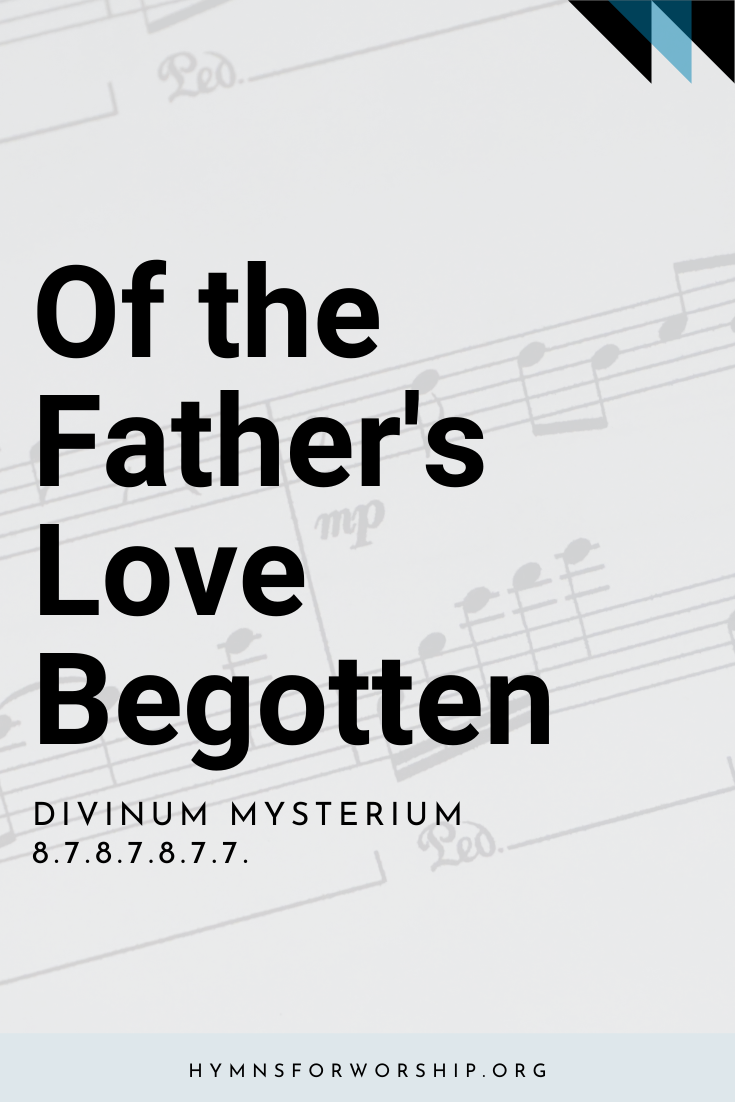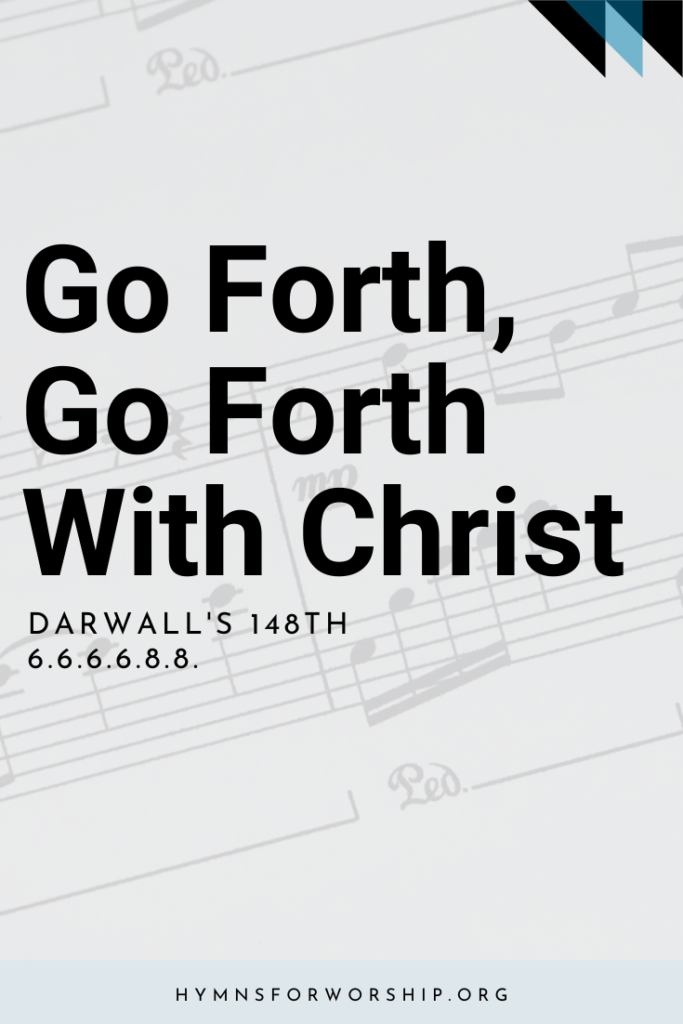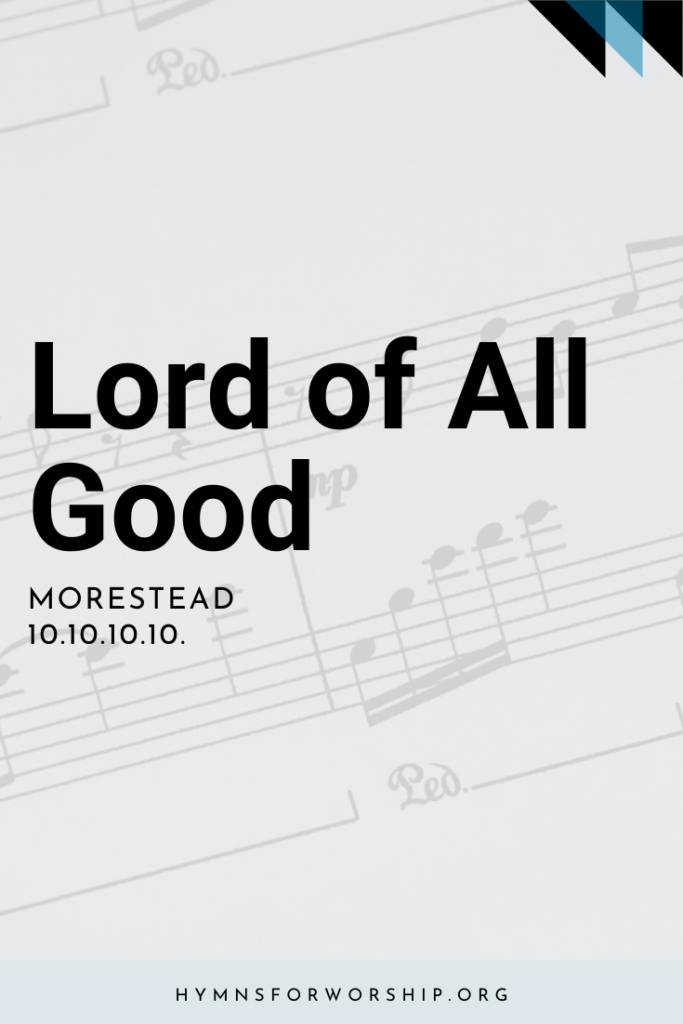JESUS CHRIST >> First advent
SDAH 116
Of the Father’s love begotten,
Ere the worlds began to be,
He is Alpha and Omega,
He the source, the ending He,
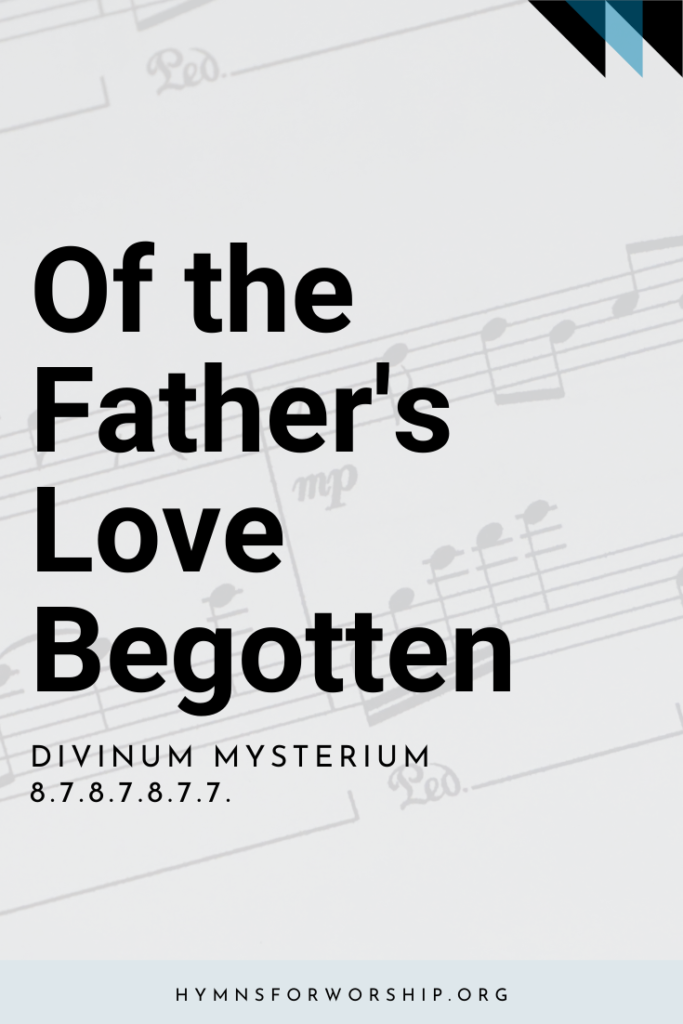
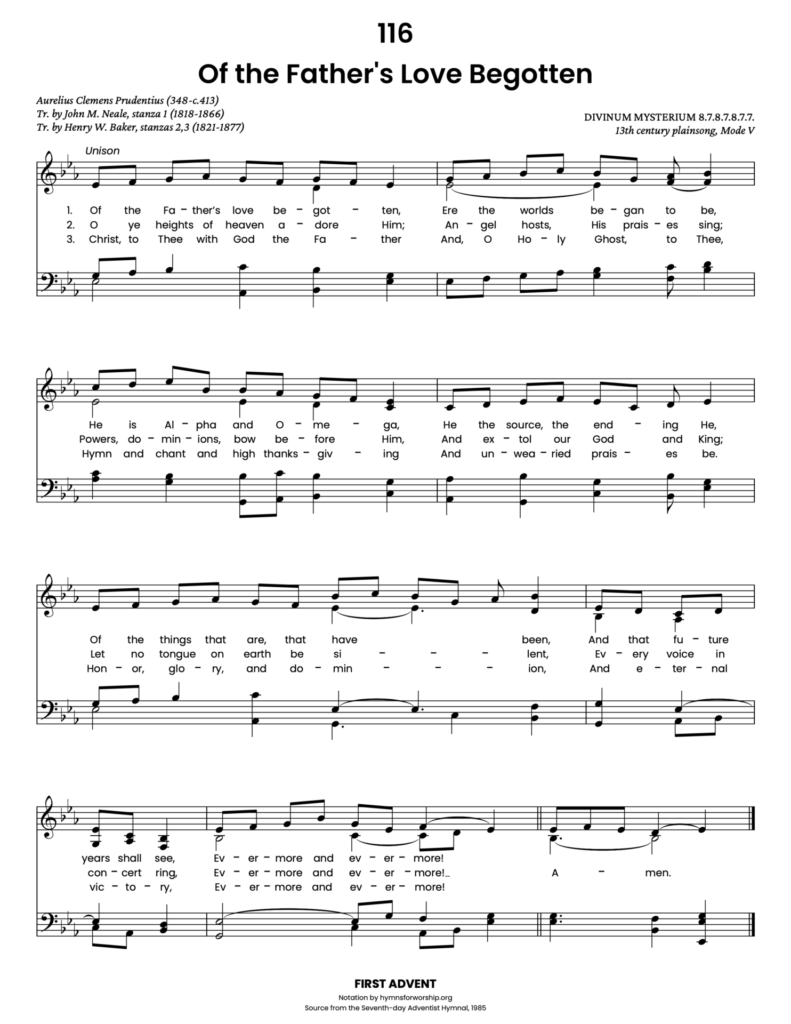
Get the hymn sheet in other keys here
For Worship Leaders
Make each hymn more meaningful with these helpful tools: Short, ready-to-use hymn introductions for church bulletins, multiple ways to introduce a hymn based on your worship theme and in-depth history and insights to enrich your song service.
This ancient hymn traces its origins to the 4th-century Latin poem Cathemerinon by Spanish poet and lawyer-turned-monk Prudentius. It reflects on Christ as the eternal Word—Alpha and Omega, the beginning and the end. The English version we sing today was shaped by translators John Mason Neale and Henry Baker, drawing from the poem’s rich meditation on the mystery of the Incarnation.
The tune, DIVINUM MYSTERIUM, is equally ancient, originally a medieval melody from a collection of sacred songs published in 1582. Its chant-like flow invites deep reverence, making it a timeless favorite for Advent and Christmas.
As we sing, may we marvel anew at the mystery of God’s love—eternal, incarnate, and evermore unfolding in our lives.


Text
1
Of the Father’s love begotten,
Ere the worlds began to be,
He is Alpha and Omega,
He the source, the ending He,
Of the things that are, that have been,
And that future years shall see,
Evermore and evermore! Amen.
2
O ye heights of heaven adore Him;
Angel hosts, His praises sing;
Powers, dominions, bow before Him,
And extol our God and King;
Let no tongue on earth be silent,
Every voice in concert ring,
Evermore and evermore! Amen.
3
Christ, to Thee with God the Father
And, O Holy Ghost, to Thee,
Hymn and chant and high thanksgiving
And unwearied praises be.
Honor, glory, and dominion,
And eternal victory,
Evermore and evermore! Amen.

Hymn Info
Biblical Reference
(a) Rev 22:13 (b) Rev 7:11 (c) Dan 7:14
Author
Aurelius Clemens Prudentius (348-c.413)
Translator
Tr. by John M. Neale, stanza 1 (1818-1866); Tr. by Henry W. Baker, stanzas 2, 3 (1821-1877)
Hymn Tune
DIVINUM MYSTERIUM
Metrical Number
8.7.8.7.8.7.7.
Tune Source
13th century plainsong, Mode V
Theme
FIRST ADVENT

